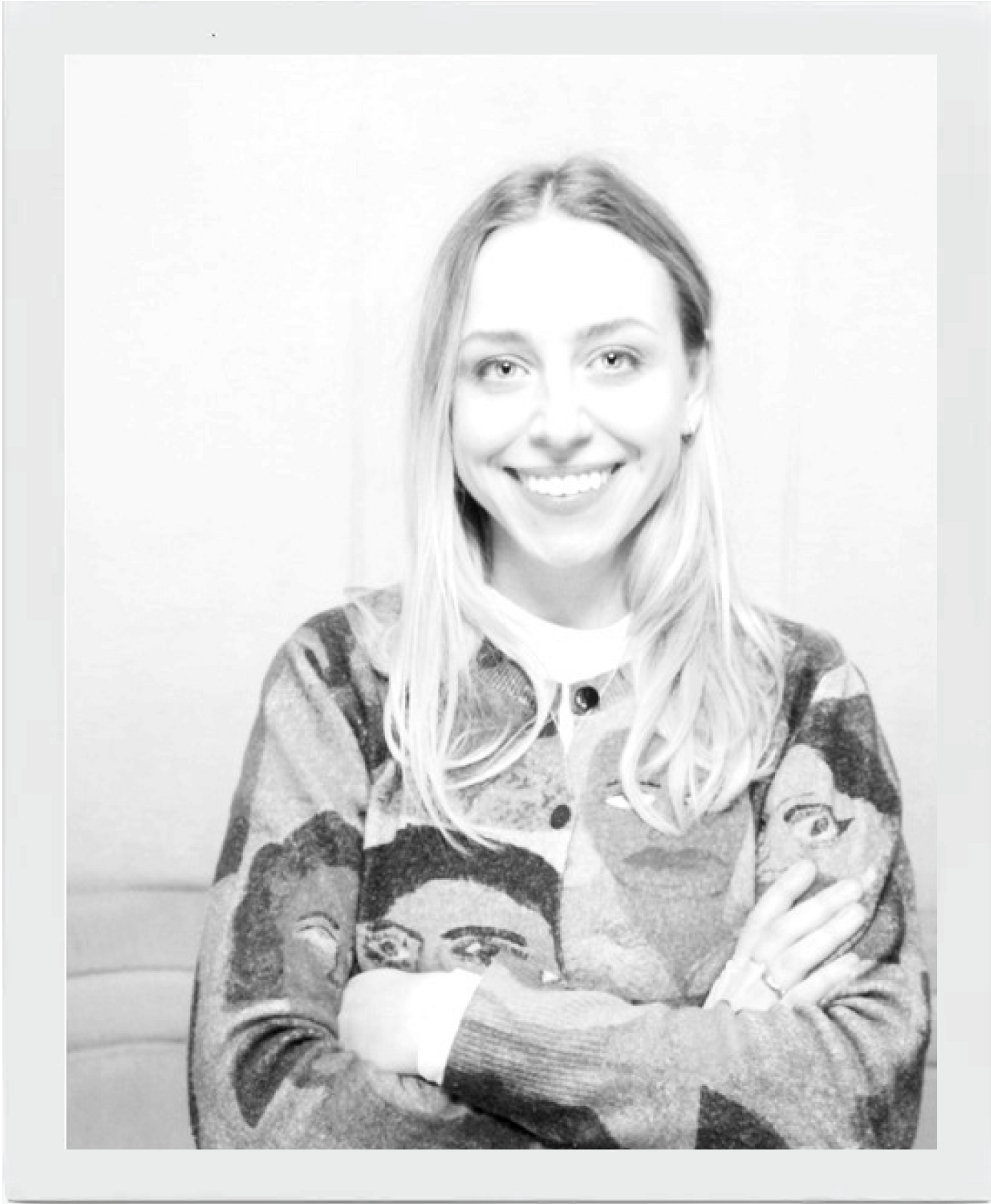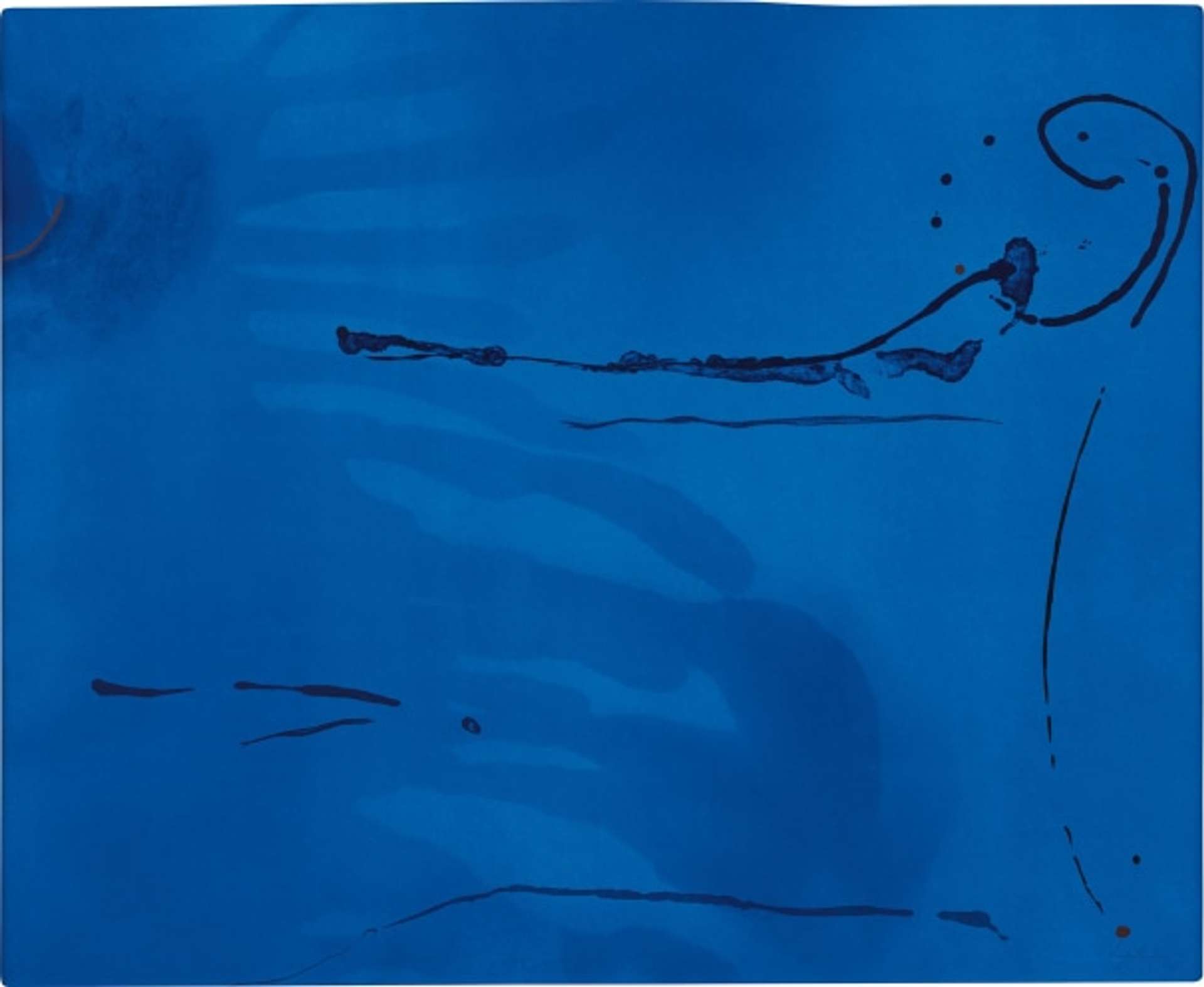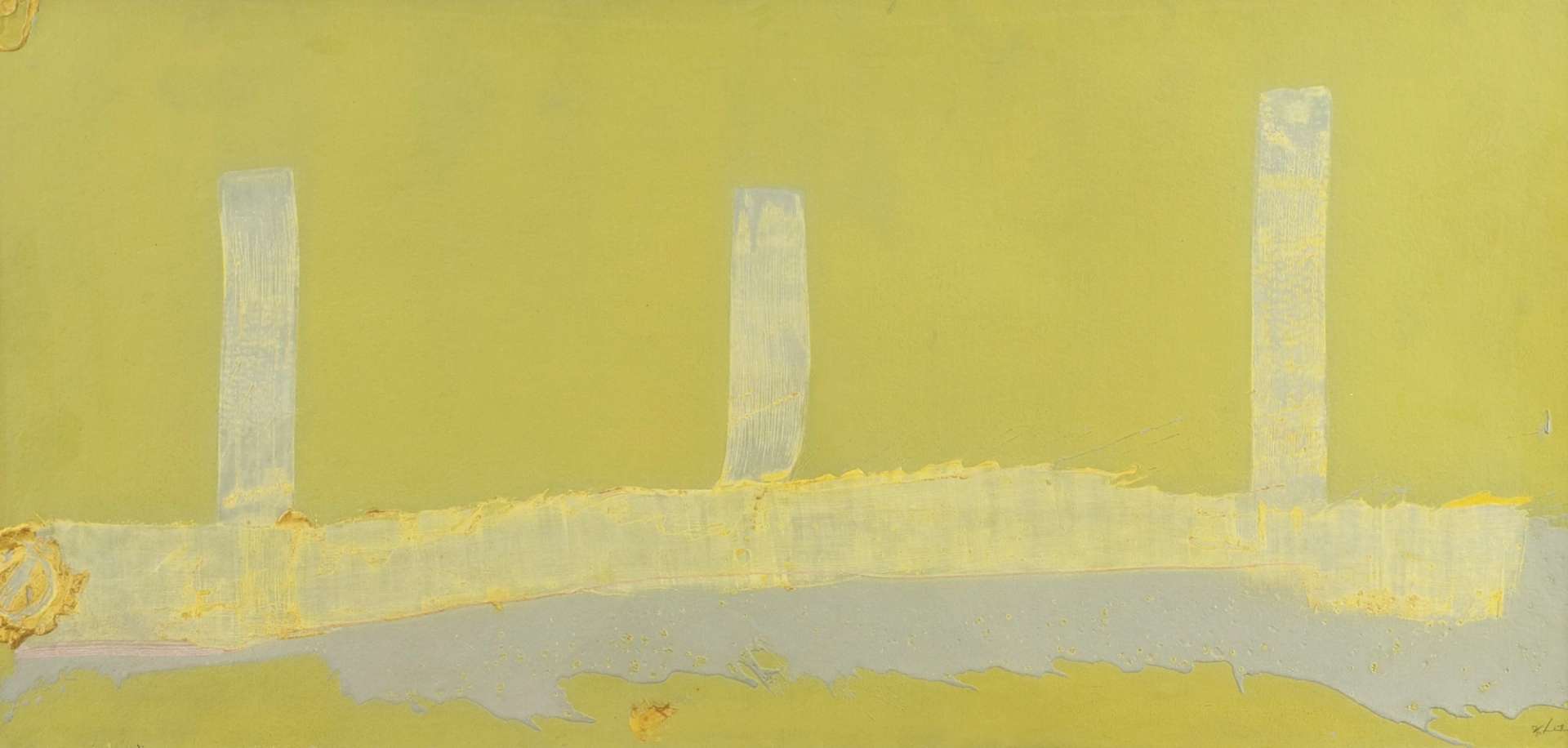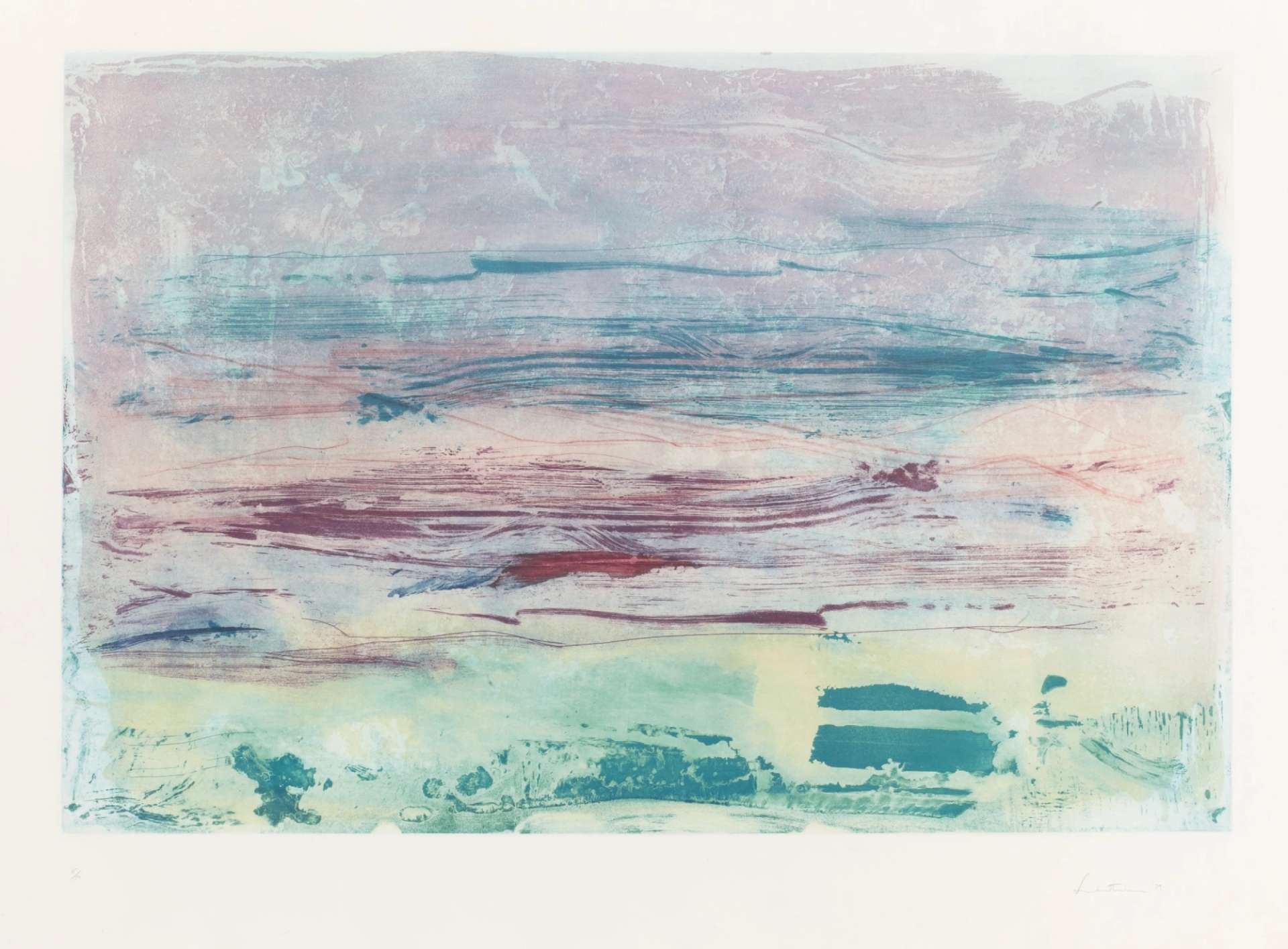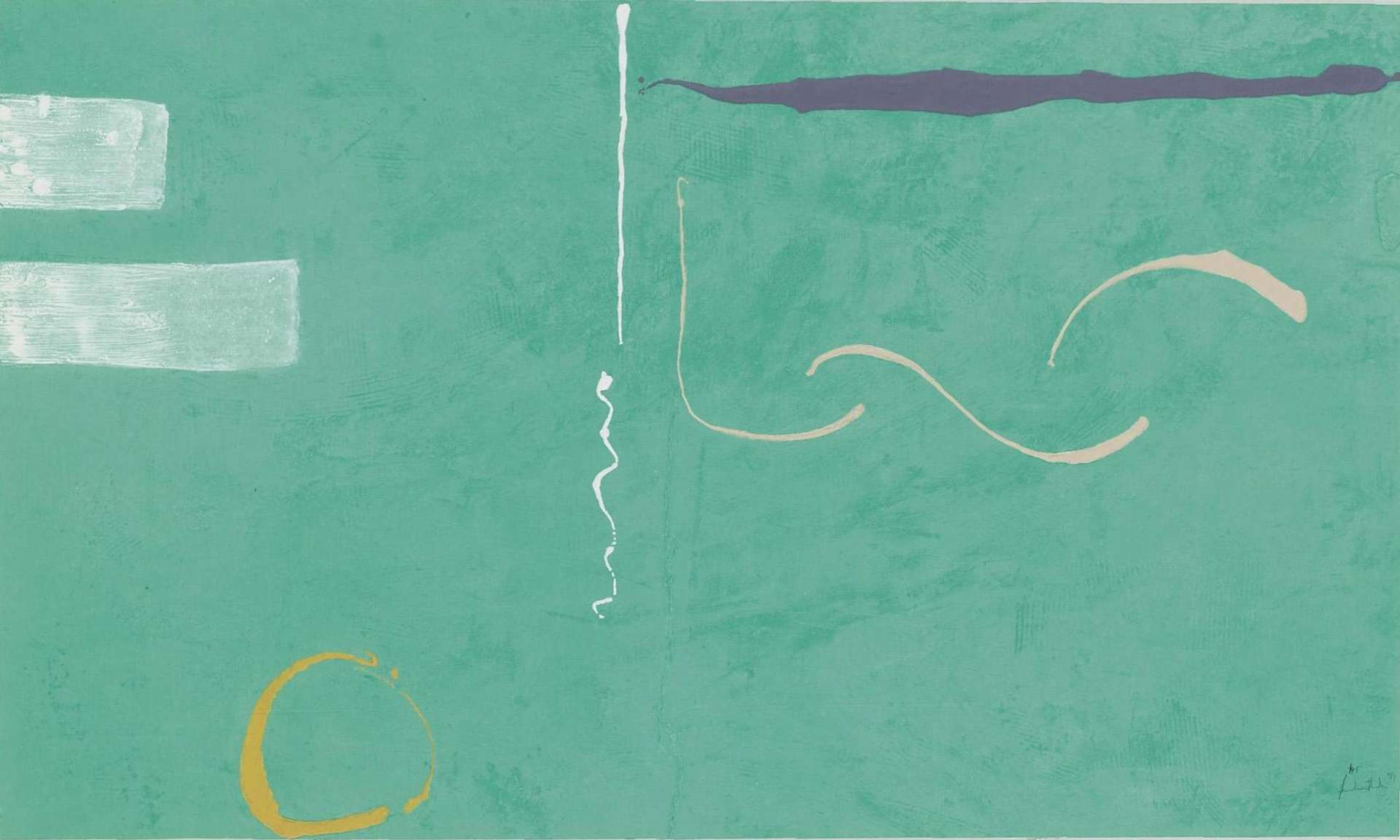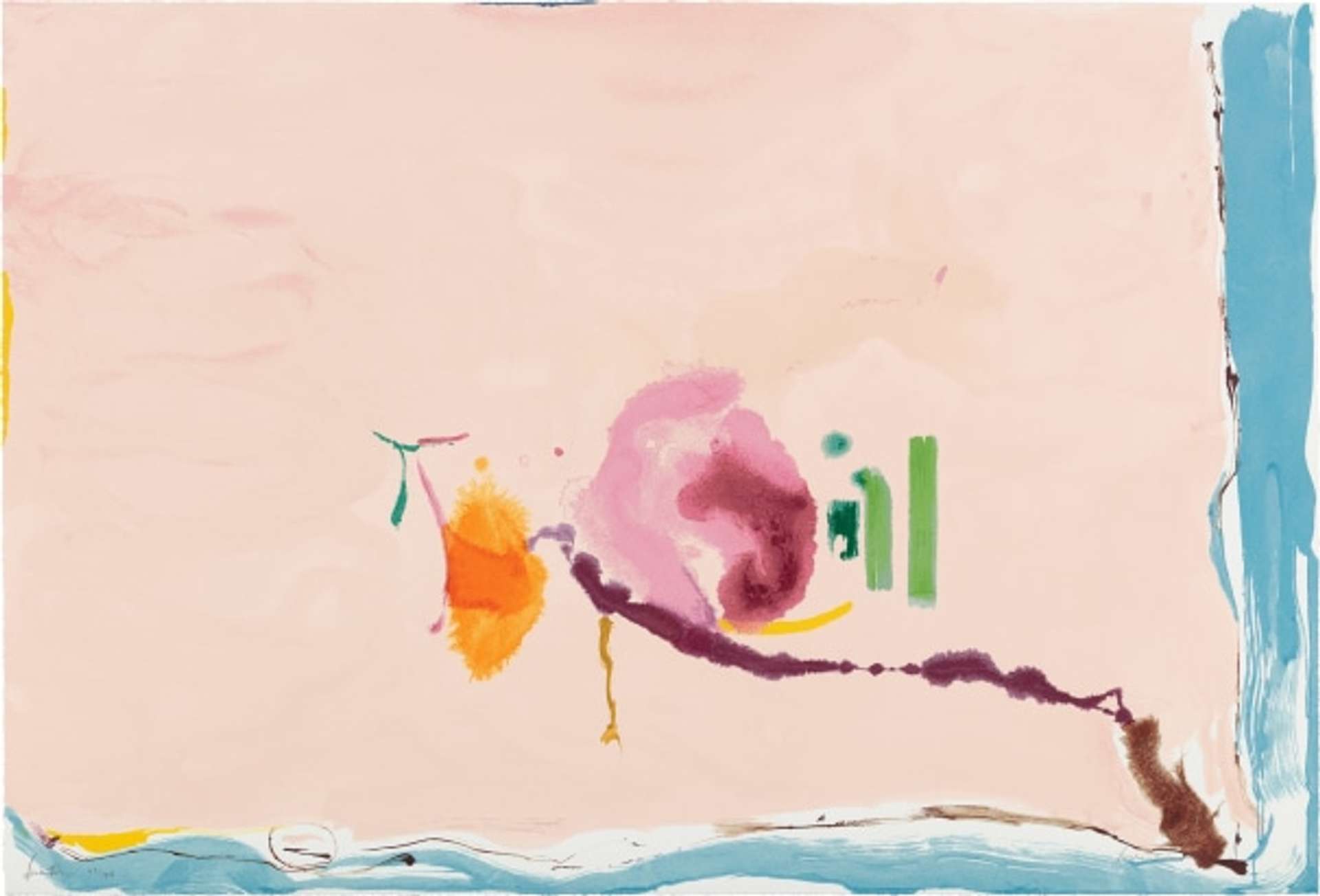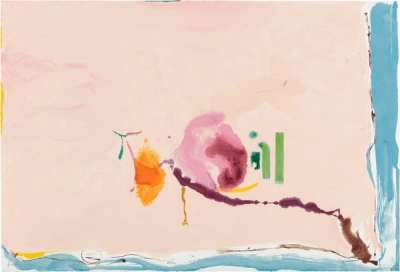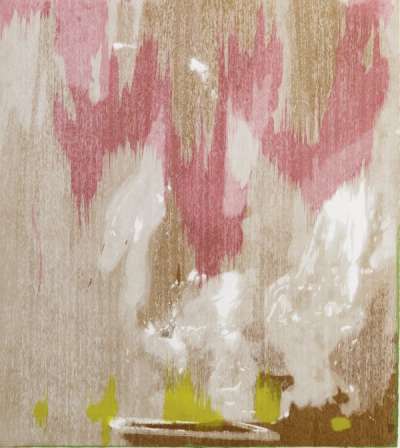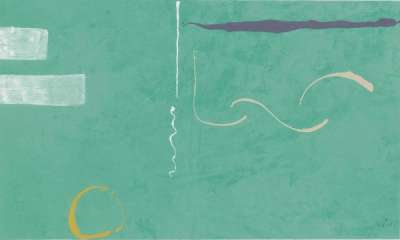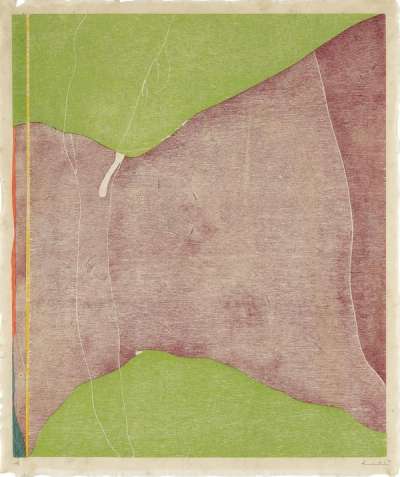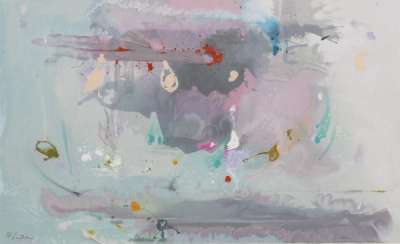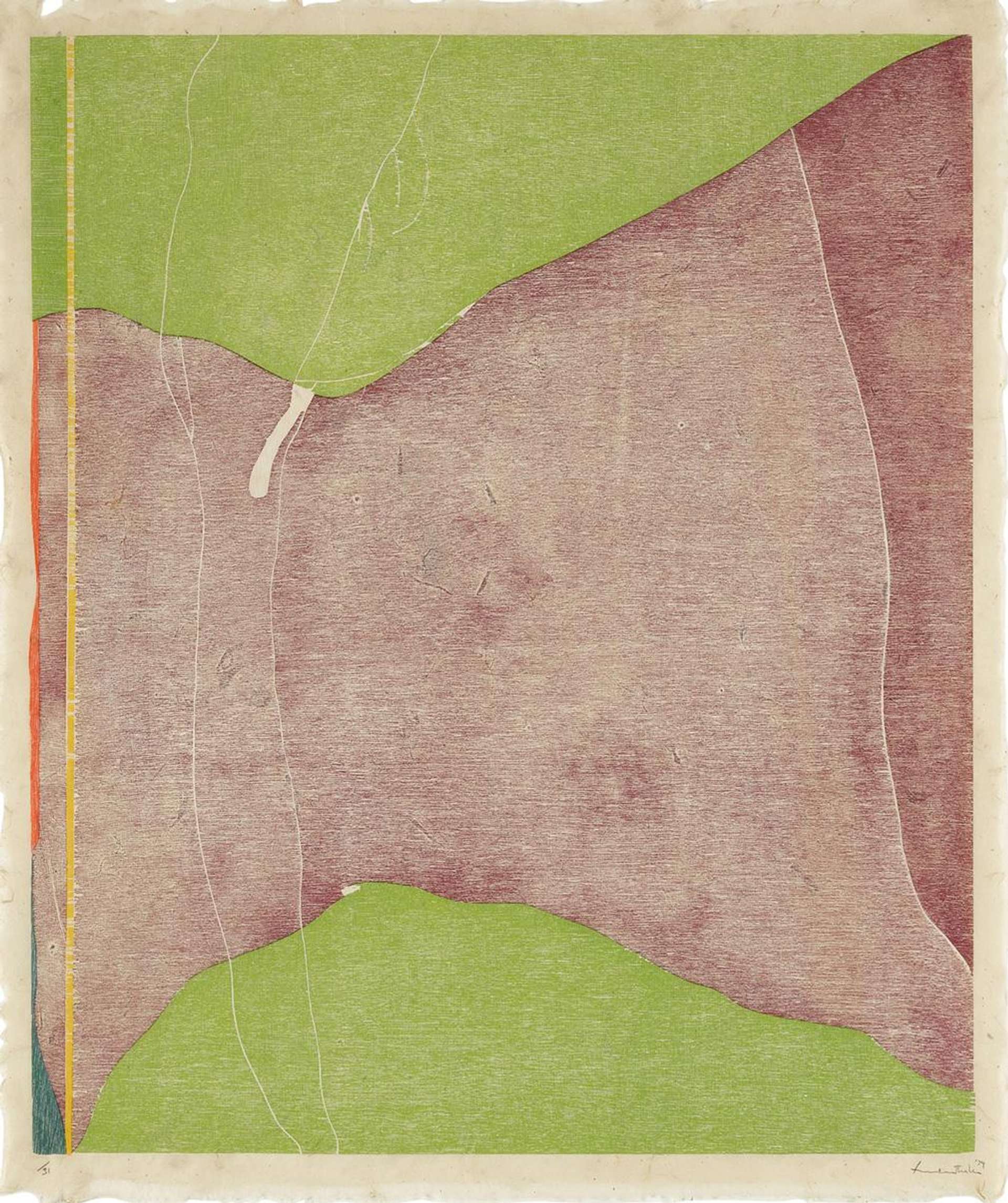 Savage Breeze © Helen Frankenthaler 1974
Savage Breeze © Helen Frankenthaler 1974What does a champion of Abstract Expressionism look like? Through her innovative approach to painting, Helen Frankenthaler challenged the conventions of the time and paved the way for new possibilities in artistic expression. Her groundbreaking soak-stain technique revolutionised abstract art, allowing colours to flow and merge in ways never seen before. Her bold use of vibrant hues and large-scale canvases created immersive experiences for viewers, inviting them to engage on a deeply emotional level.
Helen Frankenthaler's Artistic Journey
Helen Frankenthaler, a name synonymous with groundbreaking artistic innovation, was an influential leader of the Abstract Expressionist movement. Born on December 12, 1928, in New York City, Frankenthaler embarked on a journey that would redefine the boundaries of painting and forever change the art world. Frankenthaler's artistic journey began to flourish during her time at Bennington College in Vermont. There, she studied under prominent artists like Paul Feeley, honing her skills while simultaneously immersing herself in the vibrant art scene of post-war America.
The Genesis of Frankenthaler's Soak-Stain Technique
In the early 1950s, Frankenthaler encountered a pivotal moment in her career, one that would define her unique approach to painting. Inspired by the works of Jackson Pollock and Willem de Kooning, she developed an innovative technique known as the soak-stain method. Departing from traditional brushwork, Frankenthaler poured thinned-down oil paints onto unprimed canvas, allowing the colours to seep into the fabric, creating luminous and ethereal compositions.
Frankenthaler's soak-stain technique was a departure from the heavy impasto and gestural brushwork commonly associated with Abstract Expressionism. Her emphasis on colour, spontaneity, and the interaction between paint and canvas pushed the boundaries of the movement, paving the way for new possibilities in abstraction.
Her soak-stain technique played a pivotal role in her artistic evolution by giving her the freedom to explore the interplay of colour, form, and texture in unprecedented ways. By removing an element of control and embracing the qualities of her materials, Frankenthaler achieved a remarkable fusion of intention and chance. Her works, characterised by a sense of fluidity and transparency, embodied a uniquely feminine perspective, offering a fresh and innovative voice in the male-dominated art world of the time.
Understanding the Soak-Stain Technique
A Dance of Liquids
At the core of the soak-stain technique lies a delicate dance between the artist and their chosen medium. This captivating process starts with the careful selection of a porous canvas, often raw and unprimed, which will absorb and interact with the pigments. A fluid medium, typically diluted acrylics or watercolours, is poured or sprayed onto the canvas, allowing it to seep into the fabric's fibres.
Spontaneity
When Frankenthaler embraces the spontaneous nature of the soak-stain technique, she relinquished a degree of control to the interplay between gravity, the fluid medium, and the canvas. As the liquid finds its path, it creates organic shapes, gradients, and unexpected patterns. This element of chance becomes an integral part of the artwork's narrative, infusing it with a sense of freedom and exploration.
Layering and Building
The process of soak-staining is rarely limited to a single application. Artists often work in layers, allowing each previous layer to dry before adding another. This step-by-step approach adds depth and complexity to the composition, as subsequent layers interact with the underlying colours and textures. The artist carefully assesses the evolving work, deciding when to intensify certain areas or introduce new tones, resulting in a harmonious interplay of pigments.
Manipulating the Canvas
The canvas itself becomes an active participant in the creation process. The artist may tilt, rotate, or stretch the canvas, encouraging the fluid medium to flow and spread across its surface. By manipulating the canvas, they guide the direction and movement of the pigments, further enhancing the visual drama and emotive quality of the artwork.
Pouring and Dripping
Pouring and dripping are techniques that involve the controlled application of fluid medium onto the canvas. Instead of brushing or applying the medium directly, the artist pours or drips it onto the surface, allowing gravity to guide its movement. This technique creates beautiful flowing lines, cascading drips, and intriguing patterns as the medium interacts with the canvas. By adjusting the consistency of the medium, the artist can achieve various effects, from bold and defined lines to subtle and delicate drips.
Blotting and Lifting
Blotting and lifting are techniques that involve selectively removing or manipulating the applied medium from the canvas. Artists can use various tools, such as paper towels, sponges, or even their hands, to blot or lift sections of the soaked canvas. This technique creates areas of transparency, revealing the underlying layers and allowing the artist to control the values and textures within the composition. Blotting and lifting also enable the artist to create soft transitions, refine shapes, or add dynamic textures to their artwork.
These techniques require a balance of technical skill and intuition, as artists must respond to the fluid nature of the medium while maintaining their artistic vision. Their use allows artists to create paintings that engage viewers on both visual and emotional levels, inviting them to explore the intricate details and contemplate the hidden narratives within their work. The materials used in the soak-stain technique are carefully chosen to facilitate the fluidity, absorption, and interplay between the medium and the canvas. They enable the artist to control and shape the movement of the pigments while embracing spontaneity and the element of chance. Through the deliberate selection and use of these materials, artists can achieve the desired effects and create visually captivating soak-stain artworks.
Unveiling Frankenthaler's Masterpieces: An Examination of Key Works
At first glance, Mountains And Sea appears as a vibrant composition of colours that wash and merge together, creating an almost dreamlike atmosphere. Frankenthaler employed the staining technique here, which involved pouring thinned paint onto unprimed canvas, allowing the colours to seep and bleed into the fabric.
The painting's title offers insight into Frankenthaler's artistic intent, turning the canvas into a site where these elements intertwine, merging the earth with water. Because there’s no central focal point, the viewer's gaze is allowed to wander freely across the painting, encouraging their own personal interpretations and emotional engagement. The colours in this composition also play a pivotal role in its impact. Frankenthaler employs a varied palette, from serene blues and soothing greens to warmer, but soft reds. The layers help give the painting some sense of movement, while the fluidity of the colours reflect the natural environment of the subject. The canvas’ size commands attention and invites the viewers to immerse themselves in Frankenthale’s artistic vision of what a landscape can not only look, but feel like.
The Soak-Stain Technique's Influence on Colour Field Painting and Beyond
Frankenthaler's soak-stain technique played a pivotal role in the development of the Colour Field movement. By allowing the paint to seep into the canvas, she achieved a vibrant and organic quality in her works. This approach inspired artists like Morris Louis and Kenneth Noland, who became prominent figures within the Colour Field movement.
Morris Louis, embraced Helen’s technique and expanded upon it, evident in his Veil series. These works are characterised by large areas of colour and minimal composition, demonstrating his exploration of colour as an autonomous element. Louis's works, such as Alpha-Pi echo Frankenthaler's spontaneity and her celebration of colour to evoke emotions.
Kenneth Noland adopted Frankenthaler's method but approached it in a more restrained manner. His geometric compositions, such as Trans Shift and Cycle, showcase his interest in colour relationships and optical effects. Noland's works reflect the balance between control and chance, similarly seen in Frankenthaler's soak-stain technique.
Frankenthaler's new approach not only reshaped perceptions about painting but also challenged the limits on different artistic disciplines. It fused painting and drawing together, as the fluid nature of the paint often resembled the gestures and marks of drawing. Her technique's focus on colour, form, and the use of pigments pushed painting closer to the idea of pure abstraction. By revolutionising the application of paint, Frankenthaler paved the way for artists to experiment and push boundaries. She not only reshaped perceptions about the possibilities of painting but also influenced subsequent movements beyond Colour Field painting like Lyrical Abstraction.
Critical and Public Reception of Frankenthaler's Soak-Stain Technique
Challenging traditional notions of artistic process and materials, Frankenthaler's innovative approach sparked both awe and controversy, provoking a wide range of critical and public responses.
Her departure from conventional brushwork and emphasis on the inherent qualities of colour and texture incited passionate debates within the art community. Critics argued that her approach lacked the skill and control associated with traditional painting methods, dismissing it as some random, accidental spill. Others viewed it as a bold act of liberation, praising Frankenthaler's willingness to challenge established norms and break free from the confines of conventional techniques. They praised the spontaneous and fluid nature of her works, which captured the essence of emotion and embodied the spirit of abstract expressionism. Frankenthaler's mastery of colour, composition, and spatial dynamics drew acclaim for the way her paintings seemed to merge the physical and emotional realms.
Reflecting on Helen Frankenthaler’s Soak-Stain Revolution
The soak-stain technique revolutionised perceptions about the possibilities of painting, opening up new realms of exploration and inspiring generations of artists.
Frankenthaler's daring decision to pour thinned paint onto unprimed canvas challenged the established norms of brushwork and control. By allowing the paint to seep and bleed into the fabric, she embraced the unpredictable nature of the medium and introduced an element of spontaneity and freedom into her process. This unleashed a dynamic interplay of colours and forms, creating works that were vibrant, alive, and deeply expressive.
Reflecting on the soak-stain revolution, we are reminded of the transformative power of artistic innovation. Helen Frankenthaler's visionary approach challenged the status quo, reimagining the possibilities of painting and expanding the horizons of artistic expression. Her legacy serves as a testament to the impact that one artist's determination and influential technique can have on the evolution of art. It remains a vital chapter in the history of painting, reminding us of the limitless potential that lies within the hands of those who dare to break free from convention and forge their own paths.

